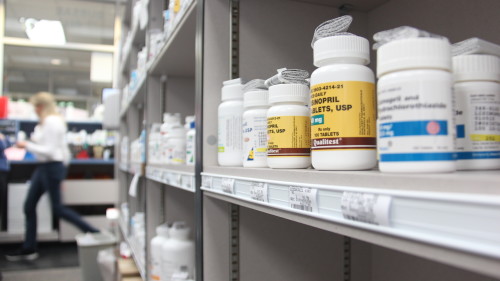
When the Tombstone pharmacy closed in January after decades of use, the loss was felt.
The store was mostly a tourist trap, full of the quaint items you might expect in an old western drug store as well as general items like snacks and bandages. But it still served residents as a modern pharmacy, and its closure forced many to begin relying on mail-in orders for sometimes life-saving prescriptions.
Residents of rural towns all across the country find themselves facing the same problem. According to the Rural Policy Research Institute, from March 1, 2003 to December 1, 2011, 852 independently owned rural pharmacies closed in the U.S.
Pharmacies, especially independent and/or rurally located ones, are closing at an alarming pace due mostly to financial competition. Rural pharmacies typically pay more to drug manufacturers per prescription, and sell a low volume of medications, according to RUPRI. This makes prices much higher than those of mail-order or internet suppliers, who are able to pass on savings to customers from buying and selling in bulk.
Lori Allen is the business manager at the Sierra Vista Health Mart, but she used to manage the Tombstone pharmacy under Pharmacist Tony Roether before its close. She says that heavy competition and the general state of the economy were the main reasons the pharmacy shut down.
“We still had a lot of customers,” Allen said, “…and we’re offering free delivery to Tombstone from this location. So we’re still servicing a large amount of Tombstone customers.”
Customers at the Tombstone location will now receive deliveries from Sierra Vista, along with customers in Bisbee who also used Tombstone pharmacy to get deliveries.
“A lot of people have either gone, or been forced to mail order by their insurance company,” Allen said. She said that many of the insurance companies offer cheaper copay if they go by mail, and like many rural pharmacies, they closed because they couldn’t compete.
Rural towns tending to have an older population, one with a higher average need for daily prescriptions, but also ones with mobility problems and/or limited access to transportation. This means many rural residents have to either find someone to drive them many miles to the nearest pharmacy, or adding themselves to the mail-order customer base.
Most chain stores like Health Mart such as Walgreens or CVS offer mail-delivery for prescriptions via phone or internet enrollment. There’s also a variety of purely web-based pharmacies that will mail deliver prescriptions door-to-door.
Sue Qutia is a Tombstone resident and works at the local library. She said that while she understands why the pharmacy had to close, its presence is greatly missed.
“The hardship here in Tombstone is, if you don’t drive or you work and can’t take the time off, there’s nowhere you can just pop in and get your prescriptions. You have to have them mailed in.” Qutia said.
The Sierra HealthMart is only open on weekdays and closes at 6 p.m., so for people who work 9 to 5 there’s no way to make the drive down without missing work.
Qutia also said that with Tombstone’s large elderly population many of the people who used the pharmacy before it closed can’t drive at all. There’s no form of public transportation or even private shuttles from Tombstone to Sierra Vista, so these residents have to rely on the mail deliveries or find a friend or family member with the time to take them down.
Qutia say’s she especially misses the one-on-one care Roether used to give to customers.
“He’s the best pharmacist I’ve ever found,” said Qutia, “If I had a question about anything, he’d always have the answer.”
Many people use a pharmacist as a gateway for treatment, conferring with them about their new medications and receiving advice or referral to a physician. Without this one-on-one style of care, a lot is just left up to the customer to decide. You can call and consult with the pharmacist there, but with no individual interaction it becomes difficult, if not impossible, to give accurate advice.
Local pharmacists tend to give more rounded information on the prescriptions they are handling simply because they have the time to do so. Explaining how and when medications should be taken is vital to a patient’s health. Without direct access to a local resource, accidents and happenstance can lead to more serious consequences.
“Is the pharmacy missed?” Qutia said, “Yes it is, and it’s going to be for a lot of people in this town.”
Mary Rinker is a reporter for the Arizona Sonora News, a service from the School of Journalism at the University of Arizona. Contact her at [email protected].
Click here for a Word version of this story and high-resolution photos.


